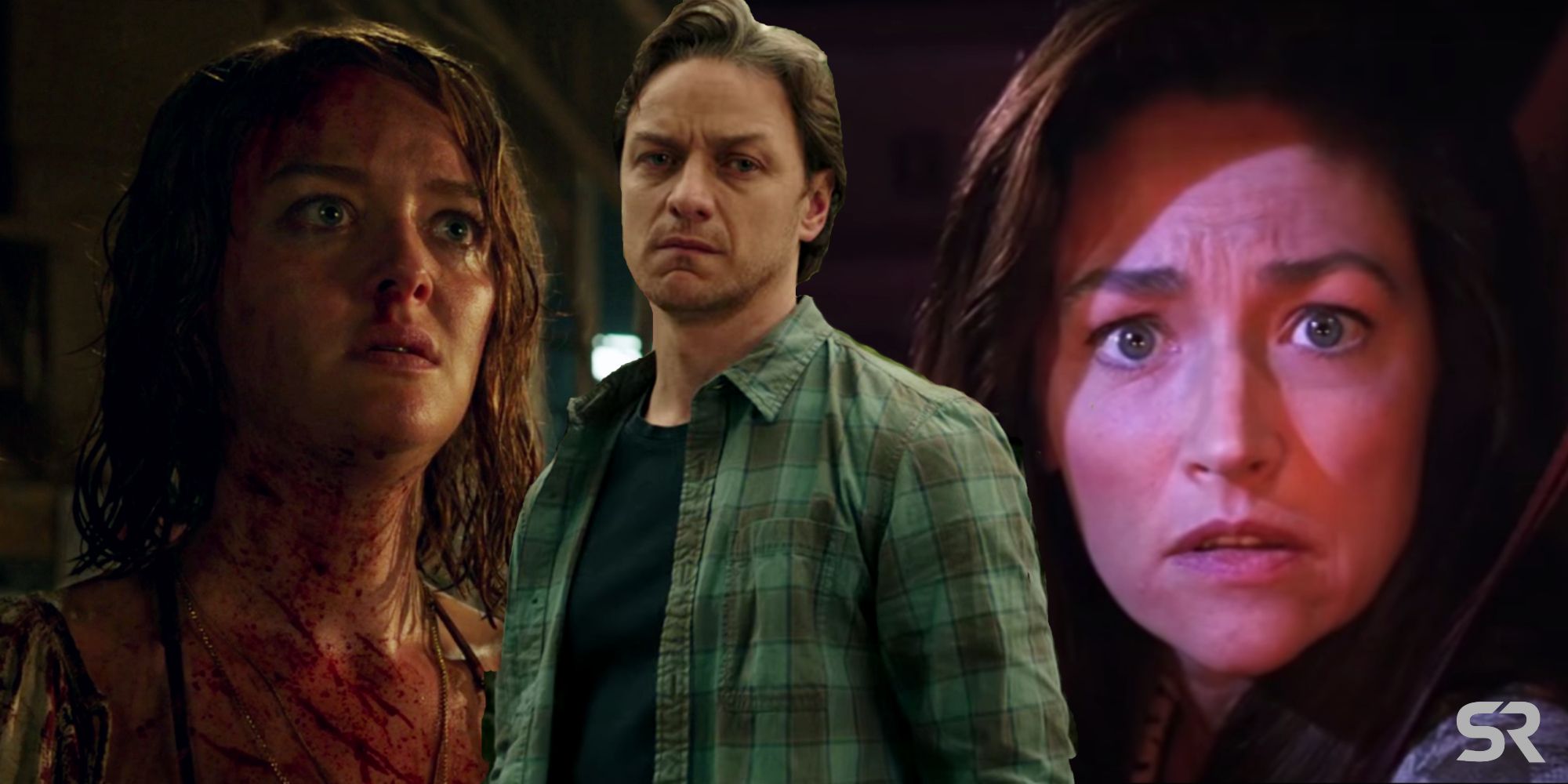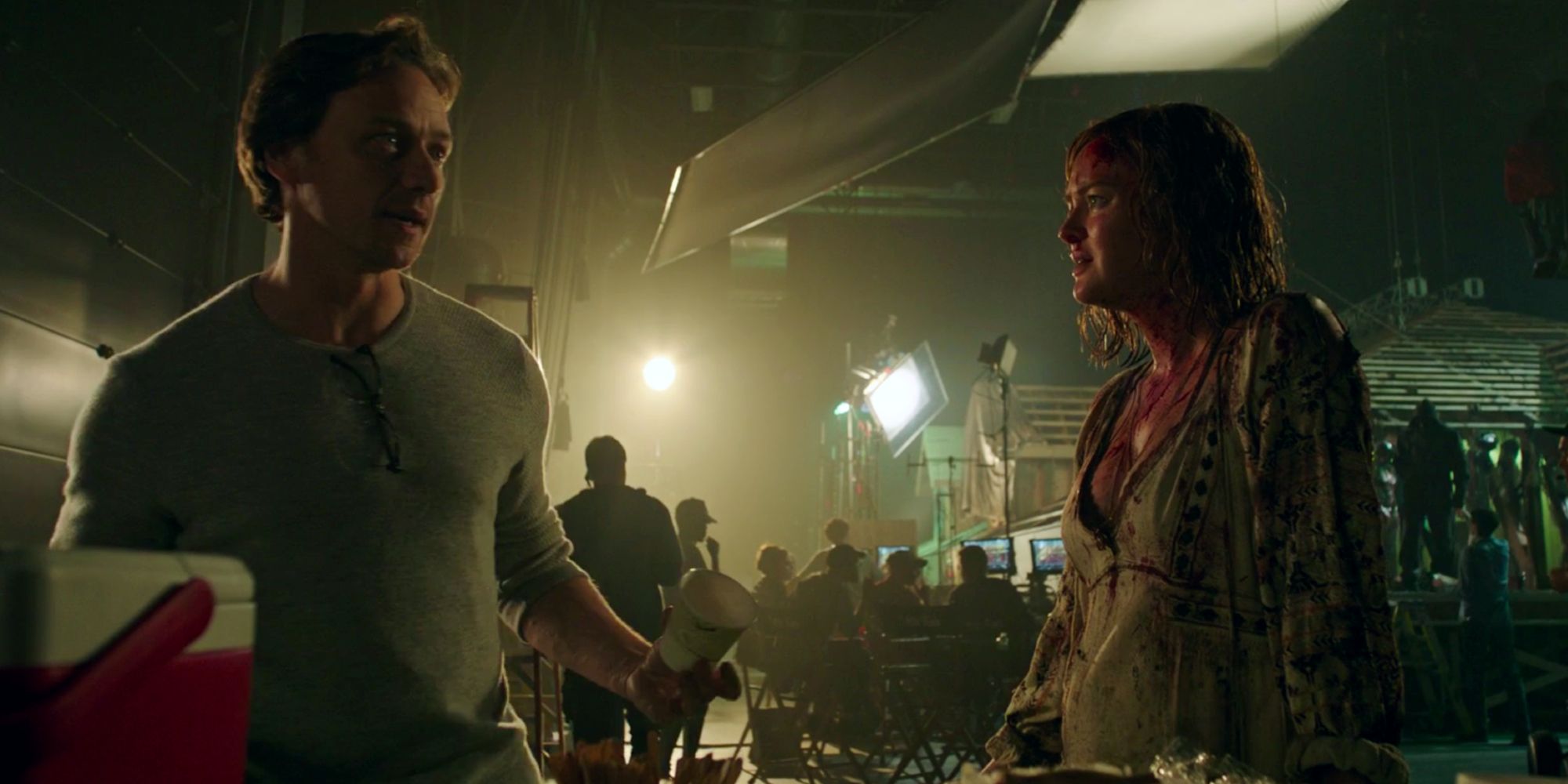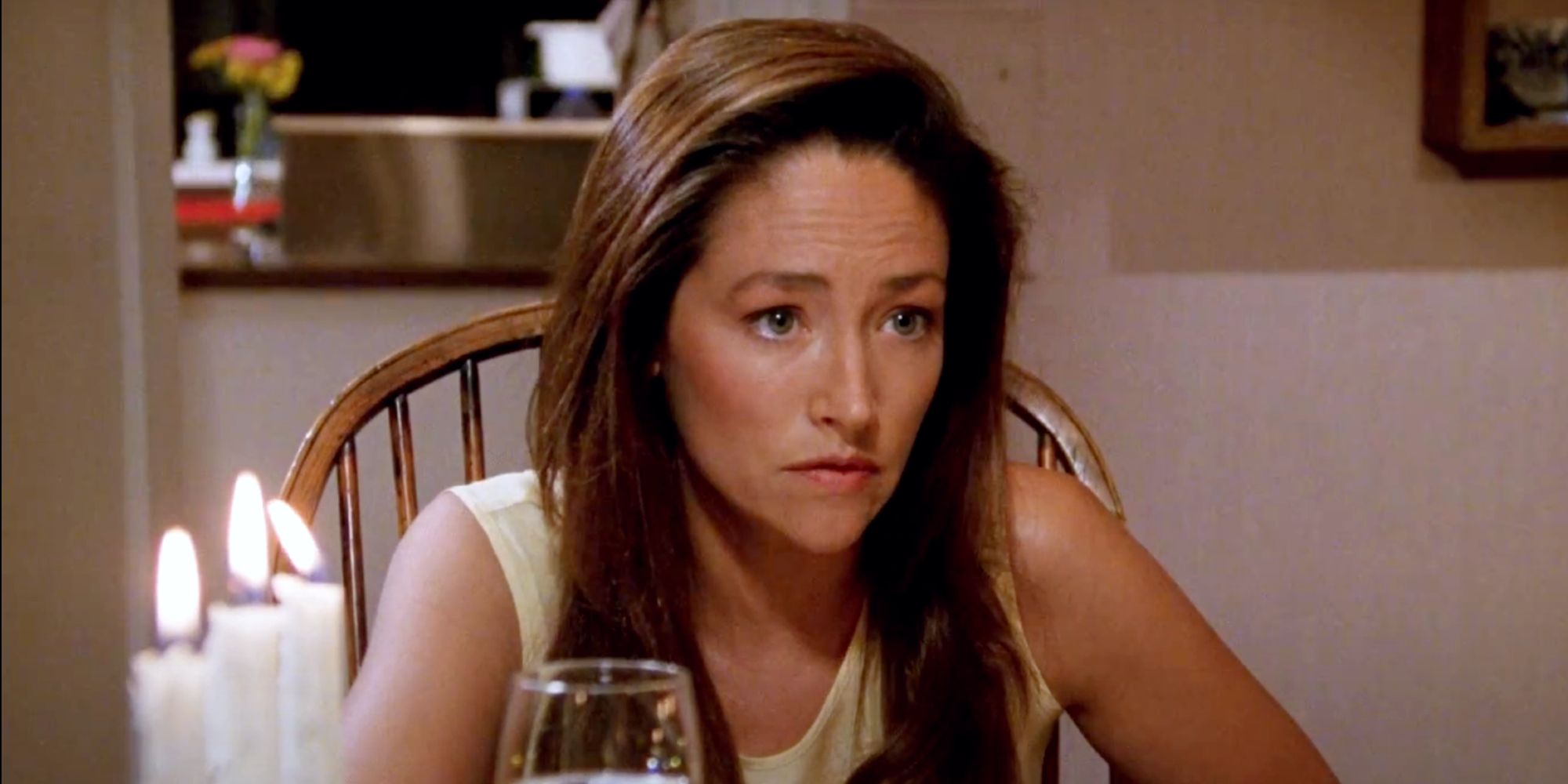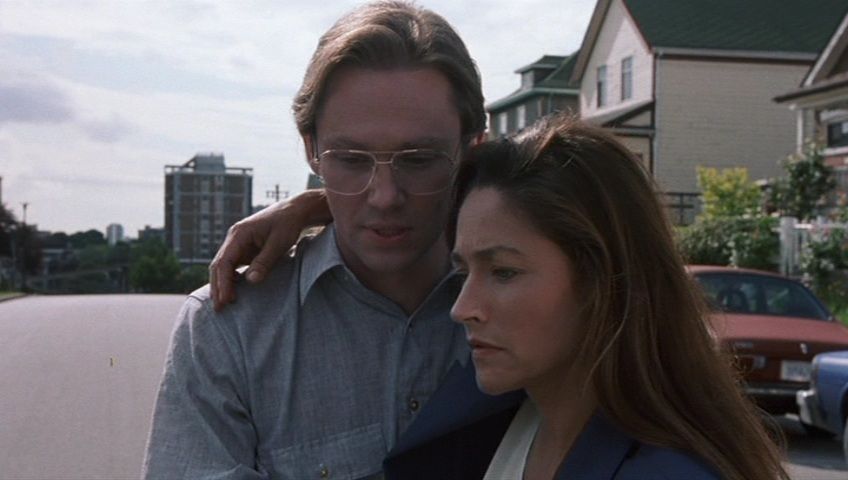With a lot of ground to cover, IT Chapter Two significantly cuts down the role of Bill Denbrough’s wife, Audra, not only to lower the running time, but because she heavily impacts the story’s ending. IT tells the story of a group of kids from the town of Derry, Maine from their youth into adulthood as they are haunted by an evil shape-shifting clown named Pennywise, or IT. Rising every 27 years to feed, IT sustains itself on fear, causing violence and chaos in the town, and abducting and eating children. The kids, who call themselves the Losers Club, fight and defeat IT, and later must honor their vow to come back to Derry upon IT’s return when they’re adults.
Weighing in at over 1,100 pages, Stephen King’s IT is a challenge to adapt for the screen. Both Andy Muschietti’s IT films and the Tommy Lee Wallace-directed 1990 miniseries did so by maintaining the central plot and cutting down on back story and the presence of side characters. Wallace’s IT miniseries clocks in at just over 3 hours, and follows the novel more closely both in terms of plot and format, as it cuts between the childhood and adult lives of the Losers Club. Muschietti takes a different course, splitting the time periods into two separate films with a combined five hour run time as IT (2017) follows the Losers as children, and IT Chapter Two (2019) tracks their adult lives.
Along with the spouses of the other Losers, Bill’s wife, Audra, appears only briefly in IT Chapter Two. The audience only meets her while on the set of Bill’s movie, The Attic Room, where the two get into an argument about the film’s ending, which seems to serve as an extra push guiding Bill back to Derry. Though it’s clear she cares for Bill, Audra advocates for the wishes of the director: that Bill write a happy ending for the film to replace the more realistic, but gloomy ending from his book. When Bill takes offense at Audra’s comments, the two argue, and she walks away, angered and hurt, never to be seen again. Let’s take a look at why Audra's role in IT Chapter Two is much smaller than in the novel.
What IT: Chapter Two Cut In Audra's Story
Audra is a much more important figure in Bill’s life, and has a rich backstory in Stephen King's novel, IT. Notably, Audra follows Bill to Derry after he leaves, and becomes pivotal not only to Bill’s development, but to the overall plot. Readers learn that Bill and Audra met on the set of his first film, fell in love, and have been happily married for eleven years. While discussing their relationship, it is revealed that Audra struggled with drug addiction while trying to cope with the pressures of fame, and Bill played a large role in her recovery. Contrary to the marital strain they deal with in IT Chapter Two, Bill and Audra have quite a healthy relationship in the book.
When the phone call from Mike reawakens old memories, Bill worries that Audra doesn’t know him as well as they thought, fearing that their marriage is built on a bad foundation. She reassures him that she loves him and offers support, expressing genuine concern for him and interest in his past. Afraid of losing him, Audra insists that Bill take her with him to Derry, and only promises that she’ll stay away when Bill begins to panic, begging her not to follow him. However, Audra’s fear for Bill's safety wins out and she goes after him. When Bill is reunited with his friends, they realize that none of the Losers have been able to have children, likely because of IT. Bill mentions that Audra had a benign tumor which, unchecked, could have caused serious and even deadly complications in a potential pregnancy. Though it seems like a negligible detail, it proves that IT has power over more than just the Losers, and is able to put Audra's life in danger.
After she arrives in Maine, Audra is abducted by Beverly’s abusive husband, Tom, who is being controlled by Pennywise. Bill and the losers find her in the sewers, catatonic after being traumatized by looking into IT’s deadlights. The Losers are able to get her safely out of the sewers, and just before leaving Derry again for good, Bill revives Audra by taking her for a ride on his old bike, Silver. The novel ends with Bill and Audra both safe and happy, now free to live their lives in peace.
How Bill's Wife Was Included In The 1990 Miniseries
Though much of her character development is abandoned, Audra is still an important part of the IT miniseries, which adheres fairly closely to the ending in Stephen King’s novel. Audra and Bill are together when he receives the phone call from Mike, and the two have a similar, but abridged, conversation to the one they have in the novel. Bill explains what little he can and begs Audra not to follow him. Despite her promise to remain, Audra does go to Derry even when the producer of the film she and Bill are working on threatens her career. While pausing to ask for directions, Audra is kidnapped just outside of Derry, captured by Pennywise himself, masquerading as a local, rather than Tom Rogan.
Audra doesn’t reappear until the adult Losers go down to the sewers and Bill discovers her purse, realizing IT has taken her. The Losers kill IT and rescue a catatonic Audra before Bill revives her with a bike ride on Silver. The film’s happy ending hinges on Audra’s awakening as the Losers, though free, leave Derry and forget each other again. Without his wife, Bill would once again be losing those dearest to him even despite defeating the thing that took everything from him in his youth.
Why Audra Is Important To Bill's Story
Though Audra’s role in IT Chapter Two was reduced largely for practical reasons, her exclusion from the larger narrative helps to emphasize the importance of the Losers’ friendship rather than their individual growth. Audra embodies the support and care that Bill was missing in his childhood, and their relationship is what allows him to move on after Pennywise’s defeat. While author Stephen King clearly places value in childhood, and acknowledges the weight of the trauma we experience in that time, the novel seems to argue that an important part of growing up is to leave the past behind. It is not so much a loss as it is a new chapter: though there is something sad about the Losers forgetting each other, it also means they are free to begin a new life, unfettered by the trauma that has been plaguing them for decades.
Though IT Chapter Two's ending is incredibly heartfelt, its message sits in stark contrast to that notion. After leaving Derry, the Losers don’t forget each other; they remain in contact, and the film closes on Bill reading an emotional letter from Stan. Muschietti’s film argues that the past can and should be carried with a person, and that growth coexists with pain — that strength can be found in sharing that pain with those around them. Neither of these outlooks is more correct than another, but they are certainly different. The novel’s ending is more bittersweet, but unfortunately also a bit more realistic in its embrace of life's inevitable changes. IT Chapter Two instead seems to strive for the happy ending Bill was once so reluctant to write.
When following the novel’s sentiment, Audra is pivotal. She is representative of Bill’s ability to form meaningful relationships despite his trauma, and the solidity of their marriage proves that Bill is not broken by what happened to him. Though it’s important that he returns to Derry to deal with his pain and his guilt, he is not defined by it. In IT Chapter Two, Bill is not defined by his trauma, but it is only with the help of the losers that he is able to overcome it. Both journeys are compelling, and speak to real truths about how we cope with past hurt, but IT Chapter Two focuses on the strength derived from friendship rather than the strength derived from within. Though Audra does make Bill stronger, she also shows that he has a well of strength to draw from that is all his own.




